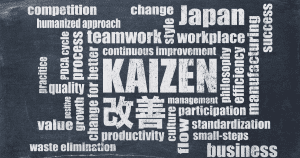Introduction: Japanese Management Practice
In the global landscape of business, the realm of Japanese management practices stands out as a beacon of efficiency, innovation, and harmony. Rooted in centuries-old traditions and continuously evolving to meet modern challenges, these practices offer invaluable insights for organizations worldwide striving for excellence. Let’s delve into the core principles and best practices that define Japanese management, uncovering actionable strategies for success.
Thank you for reading this post, don't forget to subscribe!Kaizen: Continuous Improvement

At the heart of Japanese management lies the principle of kaizen, which translates to “continuous improvement.” Unlike radical overhauls, kaizen emphasizes small, incremental changes implemented by every member of the organization. This approach fosters a culture of innovation, where employees are empowered to identify inefficiencies and suggest improvements in their daily work. By embracing kaizen, companies can achieve sustained growth and adaptability in a rapidly changing business environment.
Gemba Walks: Going to the Source

Gemba, meaning “the real place” or “where the action happens,” underscores the importance of firsthand observation in problem-solving. In Japanese management, leaders conduct gemba walks to engage directly with frontline workers, understand their challenges, and gain insights into processes. By immersing themselves in the actual work environment, leaders can identify opportunities for improvement and cultivate a culture of accountability and collaboration.
Nemawashi: Building Consensus

In Japanese culture, decisions are rarely made unilaterally; instead, they undergo a process called nemawashi, which involves extensive consultation and consensus-building among stakeholders. By seeking input from all relevant parties and addressing concerns proactively, organizations can minimize resistance to change and ensure smoother implementation of initiatives. Nemawashi fosters a sense of inclusivity and shared ownership, leading to more effective decision-making and greater employee buy-in.
Just-in-Time (JIT) Production

Originating from the Toyota Production System, JIT is a cornerstone of Japanese management philosophy that emphasizes minimizing waste and maximizing efficiency. By synchronizing production with customer demand, JIT reduces inventory costs, lead times, and storage space while enhancing quality and responsiveness. Implementing JIT requires meticulous planning, streamlined processes, and close collaboration with suppliers, but the benefits in terms of cost savings and agility are well worth the effort.
Respect for People

Central to Japanese management is the principle of “respect for people,” which entails valuing employees as individuals, fostering a supportive work environment, and promoting lifelong learning and development. By investing in employee well-being, training, and career advancement opportunities, organizations can cultivate a loyal, motivated workforce committed to organizational success. Respect for people not only enhances employee morale and productivity but also contributes to a positive company culture and reputation.
Hansei: Reflective Practice

Hansei, or self-reflection, is a practice deeply ingrained in Japanese culture and management philosophy. It involves acknowledging mistakes, analyzing their root causes, and committing to continuous improvement. By encouraging hansei at all levels of the organization, leaders foster a culture of accountability, humility, and learning from failure. Embracing hansei enables organizations to adapt to changing circumstances, innovate more effectively, and maintain a competitive edge in the market.
Conclusion
Incorporating these Japanese management practices into your organization requires a thoughtful approach and commitment to cultural transformation. By prioritizing continuous improvement, engaging with employees at all levels, and fostering a culture of respect, accountability, and reflection, you can unlock the full potential of your team and achieve sustainable success in today’s dynamic business landscape.
In conclusion, Japanese management practices offer a time-tested blueprint for organizational excellence, grounded in principles of continuous improvement, collaboration, and respect for people. By embracing these practices and adapting them to your unique context, you can cultivate a culture of innovation, efficiency, and resilience that propels your organization to new heights of success. Let the spirit of kaizen guide your journey toward continuous improvement and enduring prosperity.
 hroptimum
hroptimum



